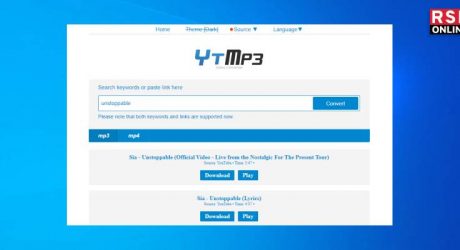Software development is not an easy feat either for any top-notch software development company or tech startup.
This is because developing software entails a series of processes ranging from ideation and requirement analysis to design, coding, and maintenance. And breaking down all aspects of software development into simple practices can make the process seamless giving a startup the best chance to scale and maximize gains.
Checkout Five Best Practices To Develop Software Applications
Here are a few software development best practices. With them, if you keep things simple, commit on a frequent basis, and thoroughly test your work, you will have a better experience writing your code and delivering excellent software.
1. Denoting Software Requirements
It is obvious that software requirements differ by application. Properly defining these criteria will assist you in understanding and implementing the best available solutions. To define the requirements, you’ll need an SRSD (Software Requirement Specification Document) that has a detailed outline of the software specifications which includes
- Characteristics of software design
- Design diagrams
- External and internal interfaces
- Software difficulties, decisions, and many more.
The SRSD guarantees that you figure out the project’s requirements. The document must be clear, concise, well-structured, and error-free. When necessary, troubleshoot the SRSD. The document should be available for update and review at any time.
2. Select the platform
The next decision to make during the startup app development phase is whether to create an Android or iOS app. Before selecting the platforms segment your audience by geographical locations. This depicts the estimated percentage of users who are more inclined to android or iOS apps and make in-app purchases.
For startups, it is great to target a specific audience with either android or iOS platform apps, depending on market share. Those with greater resources can develop apps for both platforms. Another option is to use Flutter technology to create a cross-platform app that works on both platforms. This method is frequently utilized while developing a minimum viable product.
3. Create a User-Friendly Design
Making a user-friendly interface is the art of making complicated things simple, allowing software developers to avoid the complexity of the app throughout development. Keeping the code simply does not imply reducing it to a few lines. But this implies making the software as easy to read and understand as possible. Along with this, a simple code is easy to maintain and rectify when there is a problem.
Apart from having a user-friendly design, it is also essential to incorporate various shopping cart abandonment, Shopify sales and store conversion strategies like wheel pop up, which enables users to play an interactive game and win a discount coupon code in exchange for an email address, through which he/she can shop online on your store, thus increasing sales. You can take the help of “Tada” who is an expert in implementing such exit-intent technology for any website or Shopify store.
4. Software Development
To develop the app, you must consider several factors, including the hiring of app developers, the type of app, which influences the duration and cost of development, and the ideal technological stack for your app, which comprises frontend, backend, and databases.
If you’re new to development, we recommend hiring a specialized team or outsourcing your project to a reliable software development company for startups. In this situation, you must offer specifications outlining how your software should look and work. The expert vendor will provide some recommendations about the technologies to leverage and will set up the initial development process.
5. Funding Your App
If you are new to entrepreneurship, you may be unsure of which form of funding to pursue. Knowing when and how to request money will significantly improve your chances of cracking the deal.
1. Bootstrapping.
It is a method of funding in which an entrepreneur utilizes small capital ( generally personal finances) to keep the startup running. Bootstrapping is advantageous since the entrepreneur has complete control of all decisions. However, it can be financially dangerous. At the MVP level, bootstrapping can be used and friends and relatives can also be a source of capital.
2. Angel investors.
Business angels are individuals who are interested in investing in your app in exchange for a stake in your company. When the first version of the app is released, angels typically contribute between $25,000 and $100,000.
3. Venture capitalists.
Venture capitalists’ investments range in the millions of dollars. Venture capital investments are made available to high-potential businesses (series A financing), which means that your company and ideas must be vetted and tested by users.
You can use these three options to raise capital at various stages of your startup.
The Final Words
That’s all about the best practices for developing software apps for startups. Using these practices will undoubtedly improve efficiency and assist to remove blockages in the software development process. Keep in mind that this is not an exhaustive list of practices; nonetheless, the items listed above are some of the best practices that will help you to have a seamless process when developing software.
Read Also:




























